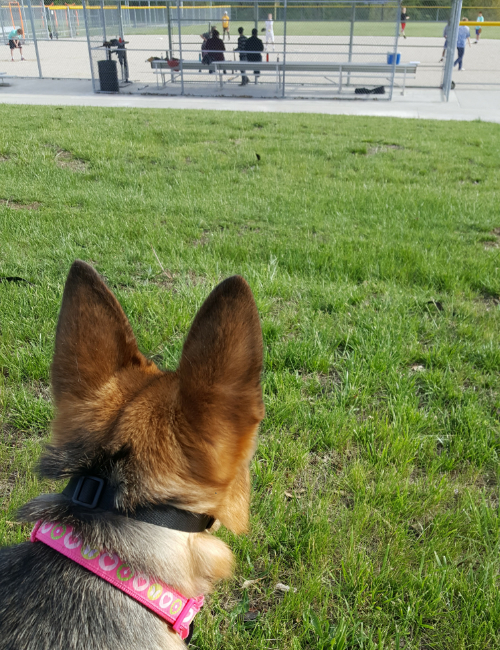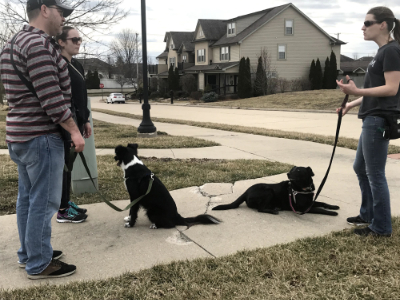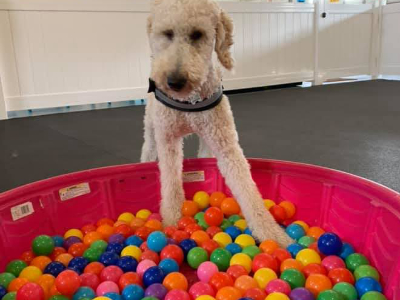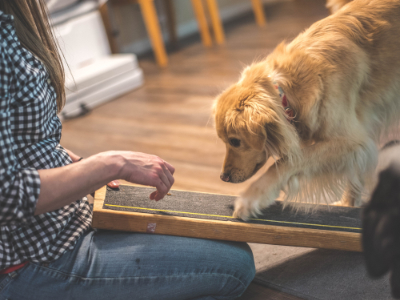Whale Watching
Learning to do nothing?
By Heather Vo

I get a lot of questions. A lot of good questions. But if I had to rank the questions by popularity, the most common question that people ask is: “How do I get my dog to stop doing (fill-in-the-blank)?” I always have the same answer, which is: “What would you like your dog to do instead of (fill-in-the-blank)?” There’s always a pause after this question while the person takes a second to think about what they would like their dog to do instead. Most people haven’t thought about this before.
After some thought, some say they aren’t quite sure. Some say that maybe their dog could sit with an inflection as if asking me if that’s a good solution. There are so many behaviors that can be written into the fill-in-the-blank, but what most people want their dog to do is typically the same no matter the situation. Their dog sees food on the table? They want their dog to do nothing about it. Their dog sees another dog on a walk? They want their dog to do nothing about it. Their dog sees a bunny to chase? They want their dog to do nothing about it. I bet you’re starting to see the pattern! All in all, it boils down to the fact that people really want their dog to be able to do nothing.
Nothing. How do you get your dog to do nothing? Especially if nothing is really hard to do and goes against every instinct in your dog’s genes? I mean, a dog doing “nothing” when they see a rabbit means they go against the instinct to chase and catch prey. That’s really hard for a dog to do. It’s like asking a person to not freak out in a terrifying situation. It goes against every instinct.
The good news is that doing “nothing” is still something we can reward. All animals will continue to perform a behavior they are rewarded for doing. The more we reward our dog for doing “nothing,” the more we will find our dog doing “nothing.” Why? If a dog is rewarded for doing nothing, nothing works to get something they like and want, such as a treat, toy, or attention. A reward. They want to continue to get things they like and want so they will keep doing nothing if we reward them for doing so. This learning process works on people too. Try it! The more you reward someone for doing the dishes, the more often they will do the dishes!
Now that you have an idea of how the process works overall, let’s get into a few helpful details. First, identify what triggers your dog to perform the fill-in-the-blank behavior that you are hoping to change. Is food left on a counter triggering your dog to counter surf? A person coming in the door triggers your dog to get excited and jump for attention? Your dog sees another dog on a walk and is triggered to sing the song of his people? Now that the trigger is identified, let’s call the thing that is triggering your dog to do the fill-in-the-blank behavior a whale. Just go with it. Stay with me and it will make sense.

Now, some dogs might have one whale while others have a lot of whales. Both are okay! Work with one whale at a time. Once you’ve chosen a whale to start with, check out the Whale Watching handout and let’s go whale watching! (See, it’s starting to make sense. And it totally sounds a lot more fun and a whole lot easier than telling you that you need to take your dog through a behavior modification plan rooted in the science of classical conditioning, systematic desensitization, and counterconditioning. Right? You’re welcome.)
Always remember to begin at a distance. Start where your dog is able to do “nothing.” If your dog needs to be 25 feet away from a whale to do “nothing,” start there. Reward your dog for being able to watch their whale and do “nothing.” Reward your dog for being able to take their attention off their whale and look at you. Sometimes it’s our human instinct to try to not let our dog see their whale because we expect them to do that fill-in-the-blank behavior we don’t like. Maybe we aren’t in the frame of mind to deal with it that day. That’s fair. But also not realistic for everyday life. We aren’t able to completely shield our dog’s vision from their whales all day every day. By starting at a distance where our dog can watch their whale and do “nothing” or look at us instead, we’re setting them and ourselves up for a successful future.
After your dog has successfully practiced and been rewarded for doing “nothing” while whale watching, begin to move closer. Start small with only one or two steps. Make sure you switch up the distance your dog is from their whale by sometimes moving closer and sometimes moving away. Also make sure that you are starting off with whale watching for small amounts of time and building up to longer periods of time. If you find that your dog is getting ready to do their fill-in-the-blank behavior, you might be too close or have been whale watching for too long. Take a break. Your dog definitely needs one and you probably need one too. Remember, work up to getting closer and staying for longer periods of time. It’s a process, not a race! Learning can sometimes seem slow, even when we’re learning as fast as we can.
After you have worked with one whale, start working with your dog’s other whales. If you haven’t seen a particular whale for a long time, set your dog and yourself up for success by starting at a distance and make sure they remember that doing “nothing” around their whale is rewarding. It’s a lot easier to begin successfully than to back track! (Seriously, we’ve all learned this lesson the hard way before so let’s try to be kind to ourselves - and our dog - and not repeat it.)
Now, off you go with your dog. Go watch those whales.


